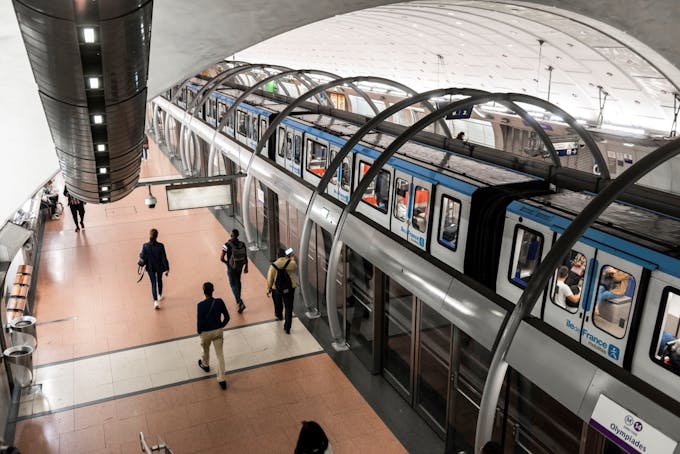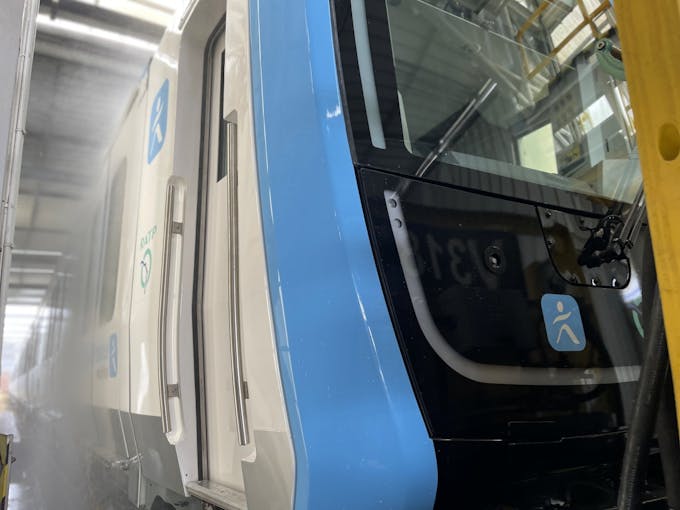How are new metros tested before they are put into service?

What is the purpose of the tests?
Choosing to equip the transport network with new metros is a long-term adventure that begins with the design of the future rolling stock and ends with a series of essential tests to ensure:
- The compatibility of the rolling stock with the network infrastructure,
- Compliance with the regulations in force,
- The safety and comfort of passengers.
One by one, discover the six main stages of testing before the launch of a new metro in Île-de-France.
Step 1: Static tests, verification of the general operation of your metro

Once the first prototypes of trains have been built, it's time for testing. And to get the ball rolling, it's time for static testing to begin.
These tests are aptly named, because they take place without any movement of the vehicle. First carried out on each carriage, they are then carried out on the assembled train.
All of these tests make it possible to check the general operation of the train. Air conditioning, electrical connection, lighting, braking equipment, sound signal, everything is combed through. Leak tests are also carried out to avoid the slightest leak in the event of rain.
A problem? The teams make the necessary adjustments before moving on to the second stage.
What is the relationship between a "beggar" and the tests of a metro?
What is a beggar? A heavy object placed inside the metro trains during the tests to simulate the real weight of the train in circulation, once equipped and loaded with its passengers.

Step 2: Safety, performance and comfort, let's go for dynamic testing
Once the static tests are over, it's time for the manufacturer to test the new vehicle in running condition. In the case of the metros built by Alstom, the train is tested on dedicated tracks at the Valenciennes-Petite Forêt or Crespin sites, for example, and then on a closed circuit, in particular at the Centre d'Essais Ferroviaires (CEF) in the Hauts-de-France region.
Battery operation, screens, acceleration and braking, electronics, once again, everything is finely analyzed and validated.

Step 3: climate tests, for a metro capable of running in all weather conditions
To ensure that it runs smoothly and that passengers are comfortable in all weathers, the metro is tested in extreme weather conditions (from -20° to +45°).
The trains can be tested in France in simulators (called climatic chambers) such as the one at the Petite-Forêt Railway Test Centre (CEF) in Valenciennes: some vehicles can also be tested in Europe such as in Vienna, Austria.

Step 4: Validation testing
This is the longest step. First on the manufacturer's tracks, then at night on the lines of the Ile-de-France network, the metro trains will be tested in traffic conditions to check that all the requirements of the specifications are respected.
What are the specifications? The document that lists all the conditions that the future train must meet in order to be marketed (energy performance, comfort and safety equipment, noise or particle emissions, etc.). The operator is responsible for drafting this document so that the train best meets its needs and those of the passengers.
Does the "jerk" speak to you?
Jerk is the technical name given to the jolt felt when braking a train. It is tested at the time of testing in order to be minimized as much as possible for the comfort of passengers.

Step 5: Integration testing as a matter of compatibility
A working metro is a metro connected to the control center, the sensors, the various beacons, the other trains in circulation as well as all the infrastructure it will encounter on its way.
At this stage, the compatibility of the future metro with the public transport network is verified.
The integration tests are taking place in parallel with the training of the drivers. It's a bit like a dress rehearsal before putting the metro into service and welcoming the first passengers.
Step 6: Commercial release, all on board
After long months of testing, the new metro can finally run on the lines and open its doors in stations!